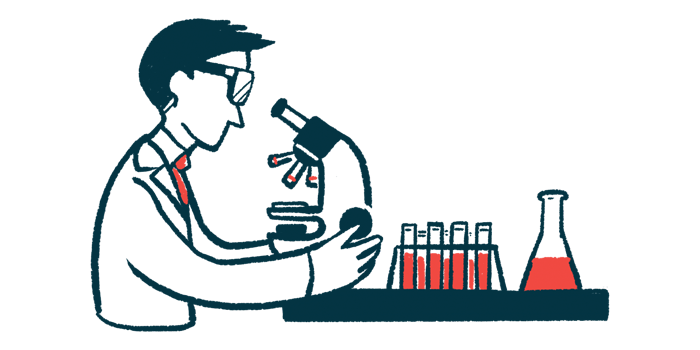Bone marrow biopsy proves key to boy’s Gaucher diagnosis
Case report shows importance of early diagnosis, researchers say

A bone marrow biopsy — a test that examines the soft tissue inside bones where blood cells are made — proved critical in diagnosing Gaucher disease (GD) in a boy in India with growth delays and a swollen abdomen.
The biopsy revealed the presence of Gaucher cells (enlarged foamy immune cells that are a hallmark of the condition) and low counts of several blood cells. Further laboratory and genetic tests helped establish the Gaucher diagnosis.
Despite supportive care, the boy’s condition worsened, and he died from severe liver failure before he could start treatment with enzyme replacement therapy (ERT).
“This case report highlights the role of bone marrow biopsy and significance of early diagnosis of GD to ensure its proper management at an early stage,” researchers wrote.
The study, “Clinical utility of bone marrow biopsy and significance of early diagnosis of Gaucher’s disease,” was published in BMJ Case Reports.
Hard-to-pin-down symptoms may lead to delayed diagnosis
Gaucher disease is caused by mutations in the GBA1 gene, which result in the deficiency of an enzyme called glucocerebrosidase (GCase). The condition is inherited.
Without a functional GCase, certain fatty molecules accumulate to toxic levels inside cells, mainly in immune cells known as macrophages. These cells become enlarged and acquire a distinctive foamy and crumpled appearance.
As these Gaucher cells accumulate in the liver, spleen, bone marrow, and other organs over time, they cause a wide range of Gaucher symptoms, including an enlarged spleen and liver, low blood cell counts, bone problems, delayed growth, and, in some cases, neurological complications.
Starting Gaucher disease treatment soon after a diagnosis is linked to better long-term outcomes. But because many symptoms overlap with other conditions, diagnosis is often delayed.
The boy in the case report was “in his first decade” and had lived with abdominal swelling and growth delays since he was about 18 months old, the researchers wrote. Repeated medical visits and oral medications had failed to improve his symptoms. His family history revealed a sibling with similar symptoms who had died at age 2.
At hospital admission, the boy’s weight, height, and head size were all below the expected range for his age. He had coarse facial features, multiple dental cavities, a short neck, curvature of the spine, thin lower limbs, and swollen feet and ankles.
He also had a markedly swollen abdomen, and examination confirmed significant enlargement of both the liver and spleen. Blood work showed low levels of several blood cell types.
The boy was fully conscious and responsive, with normal speech and behavior for his age. A neurological exam showed no motor or sensory abnormalities.
Doctors suspected a storage disorder, a group of conditions that includes Gaucher disease. A bone marrow biopsy revealed clusters of enlarged foamy cells consistent with Gaucher cells. The diagnosis was confirmed after enzyme testing showed reduced GCase activity and genetic testing identified mutations in both copies of the GBA1 gene.
The boy’s liver condition deteriorated during his hospital stay, and he developed severe encephalopathy, a complication that affects brain function. While his symptoms improved temporarily with supportive care, his condition ultimately worsened, and he died from liver failure before he could begin ERT.
The researchers said the case illustrates the importance of early recognition and diagnosis of Gaucher. “Timely diagnosis is necessary for effective management using enzyme replacement which can considerably reduce the morbidity, prevent irreversible damage and improve quality of life,” they wrote.




